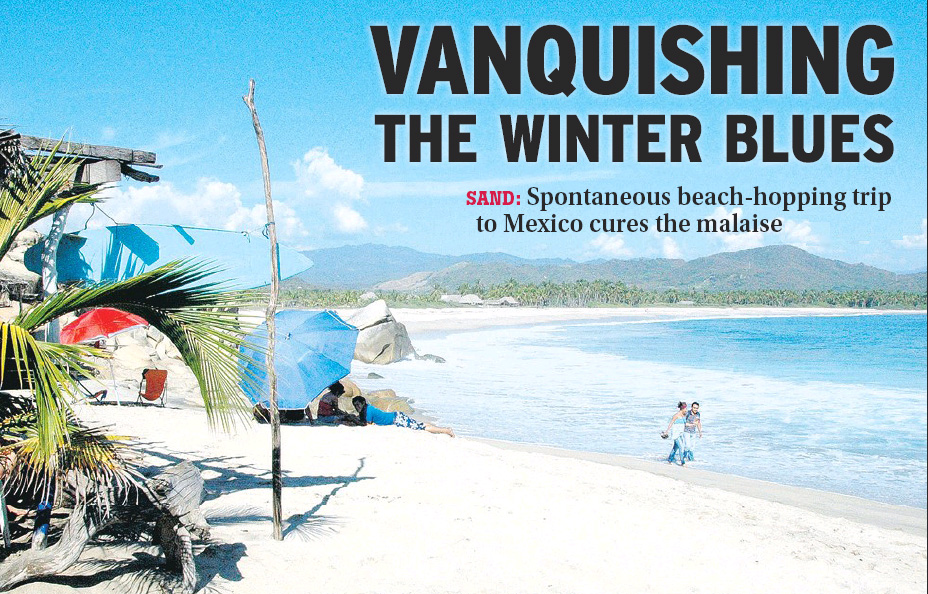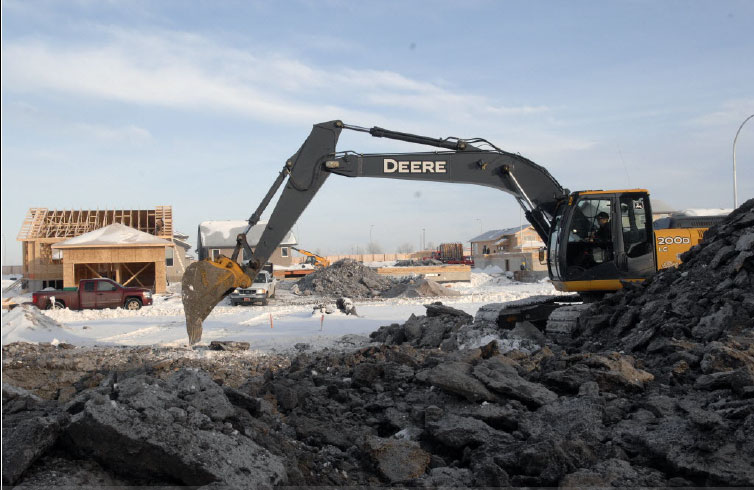Real Estate Board of Greater Vancouver
Other
Archive for February, 2010
Tips on home reno credit
Sunday, February 7th, 2010If you run a business, you may lose exemption
Tony Gioventu
Province
Dear Condo Smarts: Do strata corporations have to file tax returns? We are a 24-unit townhouse complex. Our budget is limited to insurance, landscaping and building maintenance. Our strata fees are $250 a month and we always break even on the year. An accounting office told us not to bother as we don’t pay taxes. We’re also confused about how to give owners receipts for the home renovation tax credit.
Marjorie Simpson, Qualicum
Dear Marjorie: Strata corporations are mostly classed as non-taxable corporations under tax laws, but not all strata corporations are tax exempt.
Industrial, commercial, retail, food and hotel strata aren’t necessarily tax-exempt. Even a residential one isn’t tax exempt if it’s running a commercial enterprise. Any profits must be included in its income and it will not be considered non-profit.
The following from CRA FORM IT-304R2 is very clear: “Paragraph 150(1)(a) of the Income Tax Act, requires all corporations, including condominium corporations, to file an income tax return each year, even if they are exempt from paying tax under Part I. A residential condominium corporation that qualifies as a non-profit organization under paragraph 149(1)(l) is exempt from Part I tax on its taxable income, but is required to file Form T1044, Non-Profit Organization (NPO) Information Return, with its T2 tax return. Although it is a question of fact whether a particular condominium corporation qualifies for an exemption under paragraph 149(1)(l), most residential condominium corporations qualify as non-profit organizations within the meaning of this paragraph.”
A home renovation tax credit statement from the strata corporation must contain:
– the vendor/contractor’s name, business address and GST/HST registration number
– a description of the work and when it was performed.
In addition to giving owners the above, the strata corporation should keep the following:
– the vendor/contractor’s name, business address and GST/HST registration number
– description of the goods, purchase and delivery date (keep your delivery slip as proof ) and/or when the work or services were performed
– work description, including the address where it was done
– amount of the invoice
– proof of payment — invoices must indicate “paid” or be accompanied by other proof of payment, such as a credit card slip or cancelled cheque.
Visit the CRA at www.cra-arc.gc.ca or CHOA @ www.choa.bc.ca. Tony Gioventu is executive director of the Condominium Home Owners’ Association. Send questions to him at [email protected]
© Copyright (c) The Province
Tips on home reno credit
Sunday, February 7th, 2010If you run a business, you may lose exemption
Tony Gioventu
Province
Dear Condo Smarts: Do strata corporations have to file tax returns? We are a 24-unit townhouse complex. Our budget is limited to insurance, landscaping and building maintenance. Our strata fees are $250 a month and we always break even on the year. An accounting office told us not to bother as we don’t pay taxes. We’re also confused about how to give owners receipts for the home renovation tax credit.
Marjorie Simpson, Qualicum
Dear Marjorie: Strata corporations are mostly classed as non-taxable corporations under tax laws, but not all strata corporations are tax exempt.
Industrial, commercial, retail, food and hotel strata aren’t necessarily tax-exempt. Even a residential one isn’t tax exempt if it’s running a commercial enterprise. Any profits must be included in its income and it will not be considered non-profit.
The following from CRA FORM IT-304R2 is very clear: “Paragraph 150(1)(a) of the Income Tax Act, requires all corporations, including condominium corporations, to file an income tax return each year, even if they are exempt from paying tax under Part I. A residential condominium corporation that qualifies as a non-profit organization under paragraph 149(1)(l) is exempt from Part I tax on its taxable income, but is required to file Form T1044, Non-Profit Organization (NPO) Information Return, with its T2 tax return. Although it is a question of fact whether a particular condominium corporation qualifies for an exemption under paragraph 149(1)(l), most residential condominium corporations qualify as non-profit organizations within the meaning of this paragraph.”
A home renovation tax credit statement from the strata corporation must contain:
– the vendor/contractor’s name, business address and GST/HST registration number
– a description of the work and when it was performed.
In addition to giving owners the above, the strata corporation should keep the following:
– the vendor/contractor’s name, business address and GST/HST registration number
– description of the goods, purchase and delivery date (keep your delivery slip as proof ) and/or when the work or services were performed
– work description, including the address where it was done
– amount of the invoice
– proof of payment — invoices must indicate “paid” or be accompanied by other proof of payment, such as a credit card slip or cancelled cheque.
Visit the CRA at www.cra-arc.gc.ca or CHOA @ www.choa.bc.ca. Tony Gioventu is executive director of the Condominium Home Owners’ Association. Send questions to him at [email protected]
© Copyright (c) The Province
Mexico’s bounty of beaches
Sunday, February 7th, 2010Traipsing through a bevy of sunny, sandy Shangri-Las
Anne Georg
Province

A tranquil sunrise at pristine San Auustinillo Beach. __ CALGARY HERALD

A tranquil sunrise at pristine San Augustinillo beach. Calgary Herald
As winter clenched its icy grip around Calgary, I despaired. No amount of friendship alleviated my malaise. I needed to escape. I daydreamed about hammocks, warm tropical evenings and meeting new friends. While surfing the web, I found a last-minute deal on a direct flight to Huatulco, Mexico.
I acted. I booked the flight, packed my bags and drove to the airport on a cold, dark morning, listening to radio reports warning of an impending winter storm. I didn’t have time to plan. Within six hours, I disembarked into sunshine on a hot sunny afternoon. I walked out of the airport and caught a public bus north to the newly minted city of Puerto Escondido.
When the 16th-century Spanish conquistador Hernan Cortez was asked to describe Mexico, he is said to have crumpled up a piece of paper and set it on the table. I was reminded of that on the serpentine Highway 200 to Puerto Escondido, which runs through the steep Oaxaca coastal hills.
I took the first reasonably priced hotel I found on a long stretch of beach called Zicatela and walked along the strip, enveloped in the sensuous tropical evening.
Restaurants offering an array of cuisine line the beach, each with its own music. Salsa, reggae, hip-hop and jazz collided in the evening air, creating a cacophony of musical genres.
I chose a simple outdoor eatery, sat at a table on the beach, kicked off my flip-flops and enjoyed the sound of the surf crashing onto shore.
I ordered a whole fried fish and a beer and made small talk with my friendly waiter.
My spirits began to lift. Puerto Escondido is known as Mexico’s surfing capital and Zicatela is the reason. I don’t surf, but I knew several small, protected coves ideal for swimming lie within a 20-minute walk of the town. My favourite beach was Carizilillo, where I whiled away a couple of afternoons, hanging in a hammock in a palapa (a thatched-roof, open-sided structure), drinking coconut water, eating fresh shrimp cocktails and taking frequent dips in calm turquoise water.
Another of my favourite beaches was Roca Blanca, a short bus trip north of Puerto Escondido. Miles and miles of undeveloped beach extends to the north and to the south. Once again, I found a hammock in a palapa, and bodysurfed in the moderate waves with a handful of Mexican tourists.
One morning, I forfeited a couple of hours of beach time and explored the market in the centre of Puerto Escondido, enjoying the sights and smells of the abundant produce that comes from the nearby hills.
Evenings were never dull.
I stumbled across a friendly little bar on Zicatela called the Rockaway, where I mingled with the expats and other travellers. Friday night we danced salsa around the swimming pool to a live band that regularly plays there.
Puerto Escondido is home to an emerging international music scene. Sunday night the promise of more live music took me downtown to the Adoquin, Puerto Escondido’s main tourist strip.
A pedestrian-only zone in the evenings, it features shops selling Mexican crafts, and more pizza places than taco stands. I bought my enchilada dinner from the women selling typical Mexican fare on the street.
Street food can be risky in Mexico, but I trusted these hospitable vendors, who wore pristine white uniforms and served food from sparkling clean tabletops. Then I went across the street to the tiny, funky Congo bar where I met some of the Rockaway regulars.
We grooved to edgy roots music played by a young Argentine musician passing through town. A decent local band backed him up.
The next morning I travelled south about an hour by public bus to San Augustinillo, a village comprising a couple of streets running along the ocean sprinkled with numerous small hotels and restaurants. I discovered that most of the Oaxaca coastline is exposed, offering excellent surfing conditions; but it can be dangerous for swimming.
After checking into a hotel, I found a slice of beach protected by rocks where I frolicked and chatted with fishermen and the occasional tourist passing by.
I awoke before sunrise the next day and walked along the deserted beach, meditating on the beauty of the morning and my vanishing despair.
With only a couple of vacation days left, I set out by cab to go the short distance to Zipolite, Mexico’s best-known nude beach and another surfer’s paradise. A string of modest low-rise hotels catering mainly to backpackers straggles along the beach.
I stayed at Lo Cosmico, a collection of rustic bamboo huts and simple, clean rooms built on a rocky hillside overlooking a small cove. I prefer a private bath and hot water, but I made an exception here because of the hotel’s charm. Hammocks hang in every room and in the common area. The owners are friendly and helpful.
I lounged in the various hammocks for hours, reading and chatting with the owners and the guests, talking philosophy, and swapping travel stories and personal histories. Evenings I enjoyed inexpensive, exquisite gourmet dinners at El Alchemista. I’d settled into my own version of a Corona commercial.
The morning of the seventh day, I took a public bus heading into Huatulco. The wide, manicured boulevards were eerily empty. Tourists stay in resort hotels in the several coves of Huatulco, which are separated by rocky hills.
I couldn’t see all the beaches in the short time that remained, so I took a boat tour that cruised along the coastline, revealing numerous small beaches, mostly undeveloped. We stopped at two of them, swimming and snorkelling in the warm, clear water.
I arrived at the airport in the nick of time. Sand pebbled between my toes and sea salt stiffened my unruly hair.
My despair had cowered and slunk away, tail between its legs, vanquished by the pleasure of my spontaneous escape.
IF YOU GO
– Public transportation runs frequently and costs a fraction of cabs, also ubiquitous. Be prepared to barter with taxi drivers. Where to stay:
– Puerto Escondido: Mayflower Hotel and Hostel, between the Adoquin and the town’s principal beach.
– San Augustinillo: Hotel Punta Placer, on the beach.
– Zipolite: Lo Cosmico, at the far northern corner of the beach.
Where to eat:
– Puerto Escondido: El Cafecito, on Zicatela.
– San Augustinillo: El Secreto, on the main street.
– Zipolite: El Alchemista, on the beach, just below Lo Cosmico. Where to have fun
– Puerto Escondido: Bar Rockaway, on the Zicatela beach strip; and Congo on the Adoquin.
© Copyright (c) The Province





